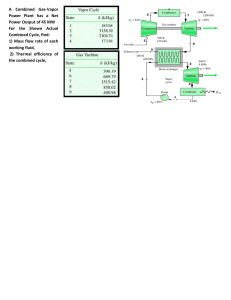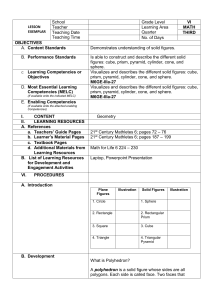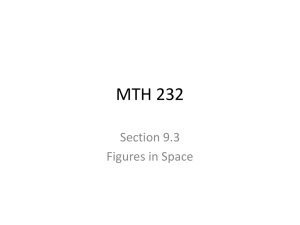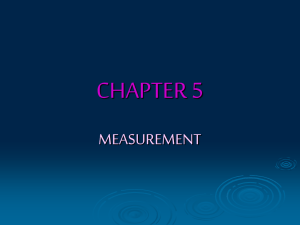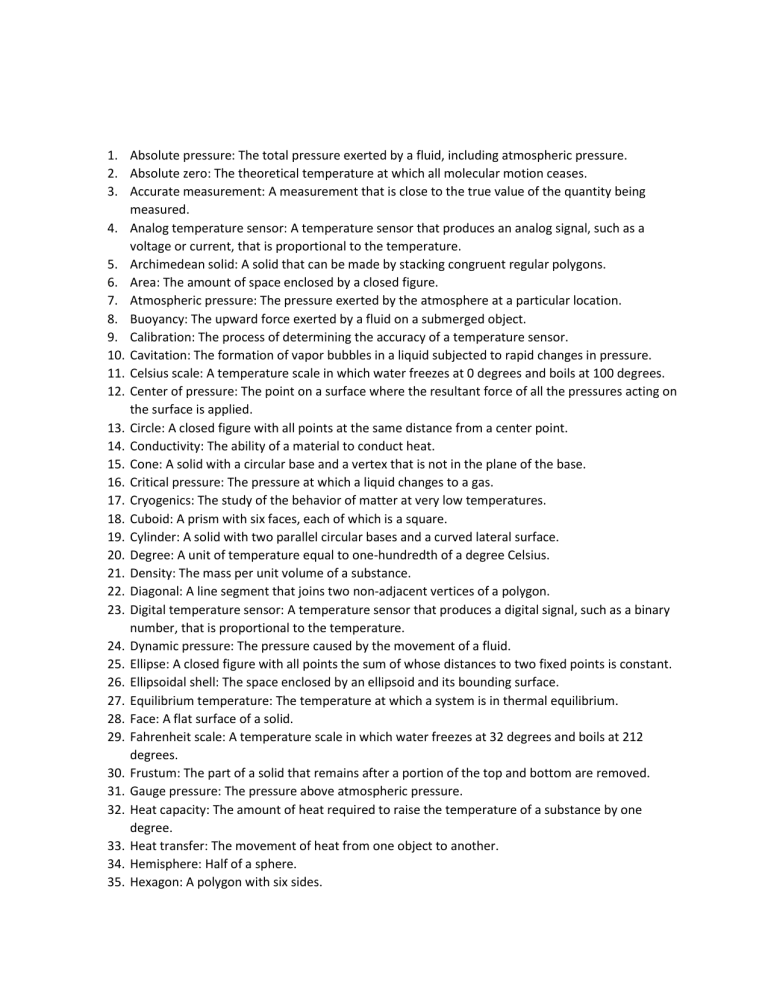
1. Absolute pressure: The total pressure exerted by a fluid, including atmospheric pressure. 2. Absolute zero: The theoretical temperature at which all molecular motion ceases. 3. Accurate measurement: A measurement that is close to the true value of the quantity being measured. 4. Analog temperature sensor: A temperature sensor that produces an analog signal, such as a voltage or current, that is proportional to the temperature. 5. Archimedean solid: A solid that can be made by stacking congruent regular polygons. 6. Area: The amount of space enclosed by a closed figure. 7. Atmospheric pressure: The pressure exerted by the atmosphere at a particular location. 8. Buoyancy: The upward force exerted by a fluid on a submerged object. 9. Calibration: The process of determining the accuracy of a temperature sensor. 10. Cavitation: The formation of vapor bubbles in a liquid subjected to rapid changes in pressure. 11. Celsius scale: A temperature scale in which water freezes at 0 degrees and boils at 100 degrees. 12. Center of pressure: The point on a surface where the resultant force of all the pressures acting on the surface is applied. 13. Circle: A closed figure with all points at the same distance from a center point. 14. Conductivity: The ability of a material to conduct heat. 15. Cone: A solid with a circular base and a vertex that is not in the plane of the base. 16. Critical pressure: The pressure at which a liquid changes to a gas. 17. Cryogenics: The study of the behavior of matter at very low temperatures. 18. Cuboid: A prism with six faces, each of which is a square. 19. Cylinder: A solid with two parallel circular bases and a curved lateral surface. 20. Degree: A unit of temperature equal to one-hundredth of a degree Celsius. 21. Density: The mass per unit volume of a substance. 22. Diagonal: A line segment that joins two non-adjacent vertices of a polygon. 23. Digital temperature sensor: A temperature sensor that produces a digital signal, such as a binary number, that is proportional to the temperature. 24. Dynamic pressure: The pressure caused by the movement of a fluid. 25. Ellipse: A closed figure with all points the sum of whose distances to two fixed points is constant. 26. Ellipsoidal shell: The space enclosed by an ellipsoid and its bounding surface. 27. Equilibrium temperature: The temperature at which a system is in thermal equilibrium. 28. Face: A flat surface of a solid. 29. Fahrenheit scale: A temperature scale in which water freezes at 32 degrees and boils at 212 degrees. 30. Frustum: The part of a solid that remains after a portion of the top and bottom are removed. 31. Gauge pressure: The pressure above atmospheric pressure. 32. Heat capacity: The amount of heat required to raise the temperature of a substance by one degree. 33. Heat transfer: The movement of heat from one object to another. 34. Hemisphere: Half of a sphere. 35. Hexagon: A polygon with six sides. 36. 37. 38. 39. 40. 41. 42. 43. 44. 45. 46. 47. 48. 49. 50. 51. 52. 53. 54. 55. 56. 57. 58. 59. 60. 61. 62. 63. 64. 65. 66. 67. 68. 69. 70. 71. Hydrostatic pressure: The pressure exerted by a fluid at rest. Ideal gas: A gas that obeys the ideal gas law. Isosceles triangle: A triangle with two sides of equal length. Kelvin scale: A temperature scale in which absolute zero is zero degrees. Kinetic theory of heat: The theory that heat is the energy of motion of the molecules of a substance. Kite: A quadrilateral with two pairs of adjacent sides of equal length. Lasso: A region enclosed by two intersecting arcs. Latent heat: The heat that is absorbed or released by a substance during a change of state, such as melting or boiling. Lateral surface area: The area of the lateral surface of a solid. Lateral surface: The surface of a solid that is not a base. Mean temperature: The average of two or more temperatures. Octahedron: A polyhedron with eight faces. Parabola: The set of all points that are the same distance from a point (the focus) and a line (the directrix). Parallelepiped: A polyhedron with six faces, each of which is a parallelogram. Pascal's law: The pressure applied to an enclosed fluid is transmitted undiminished to all parts of the fluid. Phase change: The change of state of a substance from one state to another, such as from solid to liquid or liquid to gas. Pirani gauge: A type of vacuum gauge that measures the pressure of a gas by measuring the thermal conductivity of the gas. Polygon: A closed figure with straight sides. Pressure gradient: The rate of change of pressure with distance. Pressure vessel: A container that is designed to withstand high pressures. Prism: A solid with two parallel faces, called bases, and lateral faces that are perpendicular to the bases. Pyramid: A polyhedron with a polygonal base and triangular faces that meet at a vertex. Radiation: The transfer of heat by electromagnetic waves. Rectangle: A parallelogram with four right angles. Refrigeration: The process of removing heat from a system. Regular polygon: A polygon with all sides of equal length and all angles of equal measure. Regular polyhedron: A polyhedron with all faces regular polygons. Rhombic dodecahedron: A polyhedron with 12 congruent rhombi as faces. Rhombus: A parallelogram with four equal sides. Saturated vapor pressure: The pressure at which a liquid is in equilibrium with its vapor. Scalene triangle: A triangle with no sides of equal length. Sector: A region of a circle enclosed by an arc and two radii. Semicircle: Half of a circle. Shear stress: The force per unit area that acts parallel to the surface of a material. Specific heat: The amount of heat required to raise the temperature of one unit of mass of a substance by one degree. Sphere: A solid with all points at the same distance from a center point. 72. 73. 74. 75. 76. 77. 78. 79. 80. 81. Spherical pressure vessel: A pressure vessel that is shaped like a sphere. Square pyramid: A pyramid with a square base. Square: A rectangle with four equal sides. Stagnation pressure: The pressure of a fluid that has been brought to rest. Stress: The force per unit area that acts on a material. Temperature gradient: The rate of change of temperature with distance. Tensile stress: The stress that occurs when a material is stretched. Tetrahedron: A polyhedron with four faces. Thermal conductivity: The ability of a material to conduct heat. Thermal equilibrium: The state of a system in which there is no net transfer of heat between its parts. 82. Thermal expansion: The increase in volume of a material due to an increase in temperature. 83. Thermal inertia: The resistance of a material to changes in temperature. 84. Thermocouple: A device that converts temperature differences into an electric signal. 85. Thermodynamics: The study of the relationship between heat and other forms of energy. 86. Thermometer: An instrument used to measure temperature. 87. Torsion: The twisting of a material. 88. Trapezoid: A quadrilateral with one set of parallel sides. 89. Trapezoidal prism: A prism with two bases that are trapezoids. 90. Triangle: A polygon with three sides. 91. Vapor pressure: The pressure of the vapor of a substance above its liquid or solid state. 92. Vertex: A point where two or more lines or curves meet. 93. Viscosity: The resistance of a fluid to flow. 94. Volume formula: A formula that can be used to calculate the volume of a solid. 95. Volume of a prism: The volume of a prism is the area of the base multiplied by the height. 96. Volume of a pyramid: The volume of a pyramid is one-third the area of the base multiplied by the height. 97. Volume of a sphere: The volume of a sphere is four-thirds pi r^3, where r is the radius of the sphere. 98. Volume: The amount of space enclosed by a solid. 99. Volumetric strain: The change in volume of a material due to stress. 100. Young's modulus: The ratio of stress to strain in a material. 101. Zeroth law of thermodynamics: If two systems are in thermal equilibrium with a third system, then they are in thermal equilibrium with each other.

